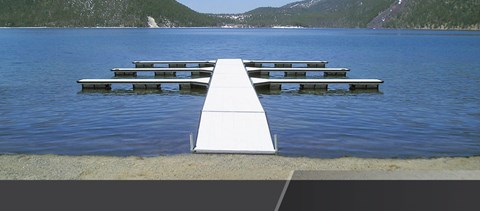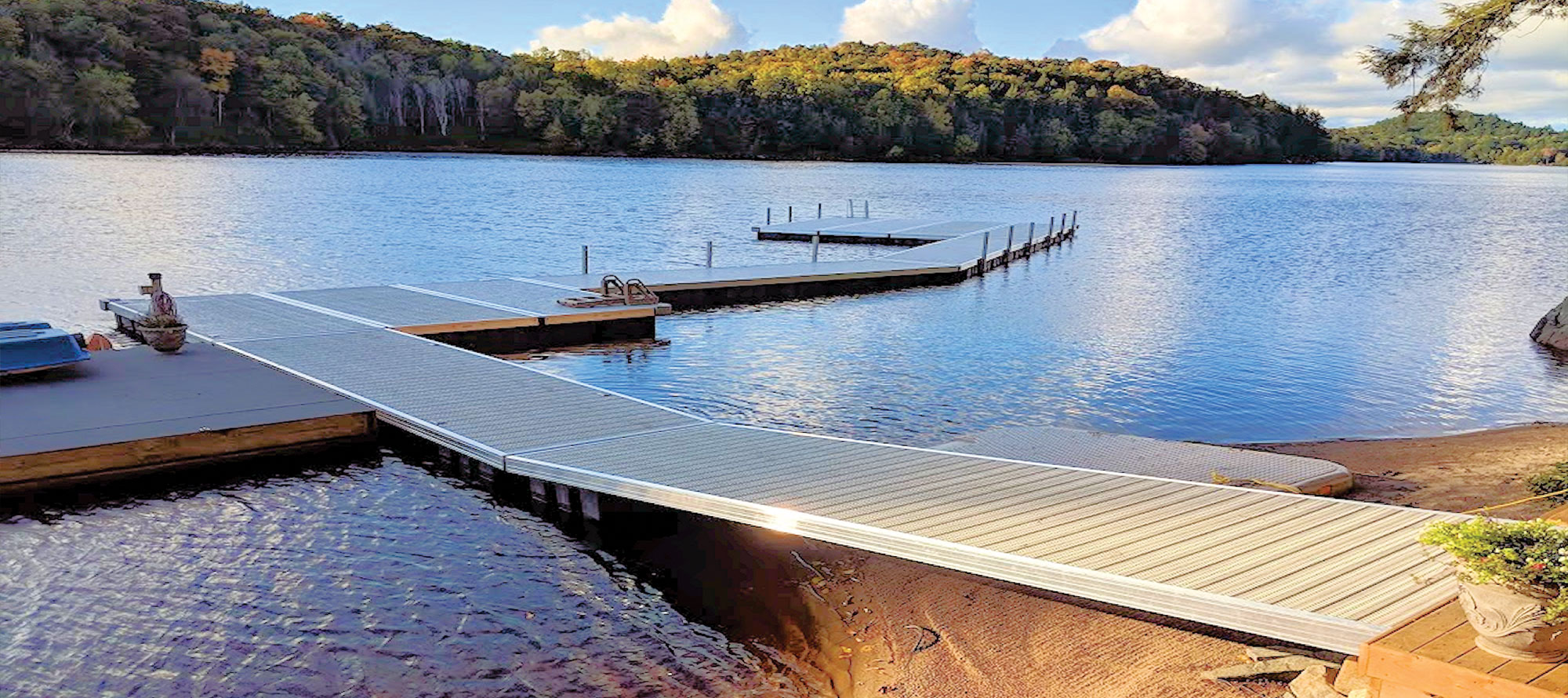Crafting Custom Solutions: Why a Floating Dock Builder is Important for Distinct Requirements
Crafting Custom Solutions: Why a Floating Dock Builder is Important for Distinct Requirements
Blog Article
Produce the Perfect Docking Option With Floating Docks
Floating docks existing a functional remedy for a variety of maritime requirements, adjusting perfectly to varying water levels and diverse vessel types. Their modular nature enables rapid setup and relocation, yet the option of appropriate products and layout attributes is crucial for making certain both performance and visual charm. As we discover the important elements that add to the effectiveness of floating docks, numerous essential variables relating to stability and maintenance will certainly emerge, questioning concerning exactly how to enhance your docking experience. The succeeding conversation will certainly illuminate these essential factors to consider.

Benefits of Floating Docks
Floating docks offer many advantages that make them a perfect choice for different maritime applications. One of the main benefits is their flexibility to changing water degrees. Unlike repaired docks, floating docks fluctuate with the tide, ensuring consistent access for vessels. This attribute is specifically essential in locations prone to significant tidal variations or seasonal water level modifications.
In addition, floating docks are commonly simpler and quicker to mount contrasted to traditional set frameworks. Their modular design permits uncomplicated assembly and disassembly, helping with maintenance and relocation when necessary. This adaptability is specifically helpful for momentary applications or in environments where problems might change.
Floating docks also tend to be much more eco friendly, as they decrease disruption to the seabed and bordering aquatic ecological communities. Their buoyant nature reduces the risk of damage to aquatic life, advertising a healthier setting. In addition, these docks can be tailored to fit numerous vessel dimensions, ensuring that they fulfill particular operational needs - floating dock services.
Ultimately, the combination of versatility, convenience of installation, and environmental considerations makes floating docks a very reliable service for a large range of maritime demands.
Picking the Right Materials
Choosing the ideal products for floating docks is essential to make certain durability, longevity, and security. The choice of products straight impacts the dock's performance in various environmental conditions, consisting of direct exposure to water, sunlight, and possible wear from aquatic web traffic.
Typical materials used for floating docks include light weight aluminum, timber, and high-density polyethylene (HDPE) Aluminum is lightweight, corrosion-resistant, and needs minimal upkeep, making it an exceptional choice for longevity. Its initial price can be greater contrasted to other materials.
Wood, while cosmetically attractive and offering a conventional look, can be vulnerable to rot and insect damage otherwise effectively treated. Therefore, utilizing pressure-treated wood or normally long lasting types like cedar or redwood can mitigate these issues.
HDPE is a prominent choice because of its resistance to UV rays and chemicals, together with being environmentally friendly. floating dock services. It is light-weight and offered in different colors, enabling modification
Inevitably, the best material choice will certainly depend on specific needs, including budget, wanted looks, and environmental considerations. Careful evaluation of these factors will result in a successful and durable floating dock solution.
Design Considerations for Stability
When creating floating docks, ensuring stability is a basic aspect that can dramatically influence their performance and security. Stability in floating dock style is influenced by different elements, including buoyancy, weight distribution, and the setup of components. An optimal buoyancy system should utilize products that supply adequate lift while reducing weight. This equilibrium makes sure that the dock continues to be above water, even under differing tons.
Weight circulation is crucial; evenly dispersing lots across the dock stops tilting and enhances stability. Wider designs can provide boosted stability, specifically in harsh water problems, while longer docks might require additional supports to avoid sagging.
Another vital factor to consider is the environmental impact, consisting of wave action and wind. Including attributes such as sidewalls or skirting can assist alleviate the impacts of ecological forces, keeping security in negative problems. Ultimately, a mix of thoughtful layout, material selection, and understanding of environmental aspects will certainly produce a floating dock that fulfills both stability and safety needs.
Installation Tips and Techniques

Next, safeguard the needed authorizations and stick to regional policies, which might dictate setup techniques and environmental considerations. If called for, engage read the full info here a certified service provider experienced in floating dock installations. Usage premium materials made for aquatic environments to boost resilience and longevity.
When positioning the dock, straighten it identical to the coastline to help with very easy accessibility. Make certain that the anchoring system is robust, employing cinder block or helical supports to stabilize the dock against wind and wave activity. It's crucial to make up seasonal water level variations, including potential ice activity in chillier environments.
Throughout the setup, double-check the dock's floatation and security before finalizing the anchoring. Regularly evaluate the installation for any type of signs of wear or damages. By following these techniques and pointers, you can achieve a safe and secure, functional, and cosmetically pleasing floating dock installation that satisfies your requirements.
Upkeep and Care Guidelines
Keeping and caring for floating docks is vital to lengthening dock company their life-span and guaranteeing risk-free usage. Routine evaluations must be performed to recognize any type of indications of wear, damages, or marine growth. Look for cracks, loose installations, or discolored locations on the dock's surface, as these concerns can compromise structural stability.
Cleaning is essential. Make use of a stress washing machine to eliminate algae, barnacles, and debris, which can collect with time. For stubborn development, think about ecologically pleasant cleaner that won't hurt aquatic life.
Additionally, inspect the mooring lines and anchors often to guarantee they are safe and secure and free from deterioration. Change any kind of frayed or damaged lines promptly to keep security.
During extreme weather, such as storms or freezing problems, take precautionary measures. Protect the dock with additional mooring lines and, if possible, remove any kind of detachable parts to prevent damages.
Verdict
In final thought, the execution of floating docks presents a functional and efficient docking remedy ideal for various maritime applications. Their versatility to varying water levels, incorporated with a modular layout, permits simple personalization and relocation. Choosing ideal materials boosts both longevity and visual allure, while careful consideration of security makes sure safety and long life. With proper installation and routine maintenance, floating docks can supply efficient and trusted docking experiences for a large range of vessels.
As we explore the crucial components that add to the efficiency of floating docks, several vital elements relating to security and maintenance will emerge, raising inquiries concerning exactly how to optimize your docking experience. Unlike fixed docks, floating docks surge and loss with the tide, making sure constant access for vessels.When developing floating docks, making sure security is an essential facet that can dramatically influence their functionality and safety and security. Stability in floating dock style is influenced by different aspects, consisting of buoyancy, weight circulation, and the setup of parts. Eventually, a mix of thoughtful design, material option, and understanding of ecological elements will generate a drifting dock that satisfies both security and security Visit Your URL needs.
Report this page